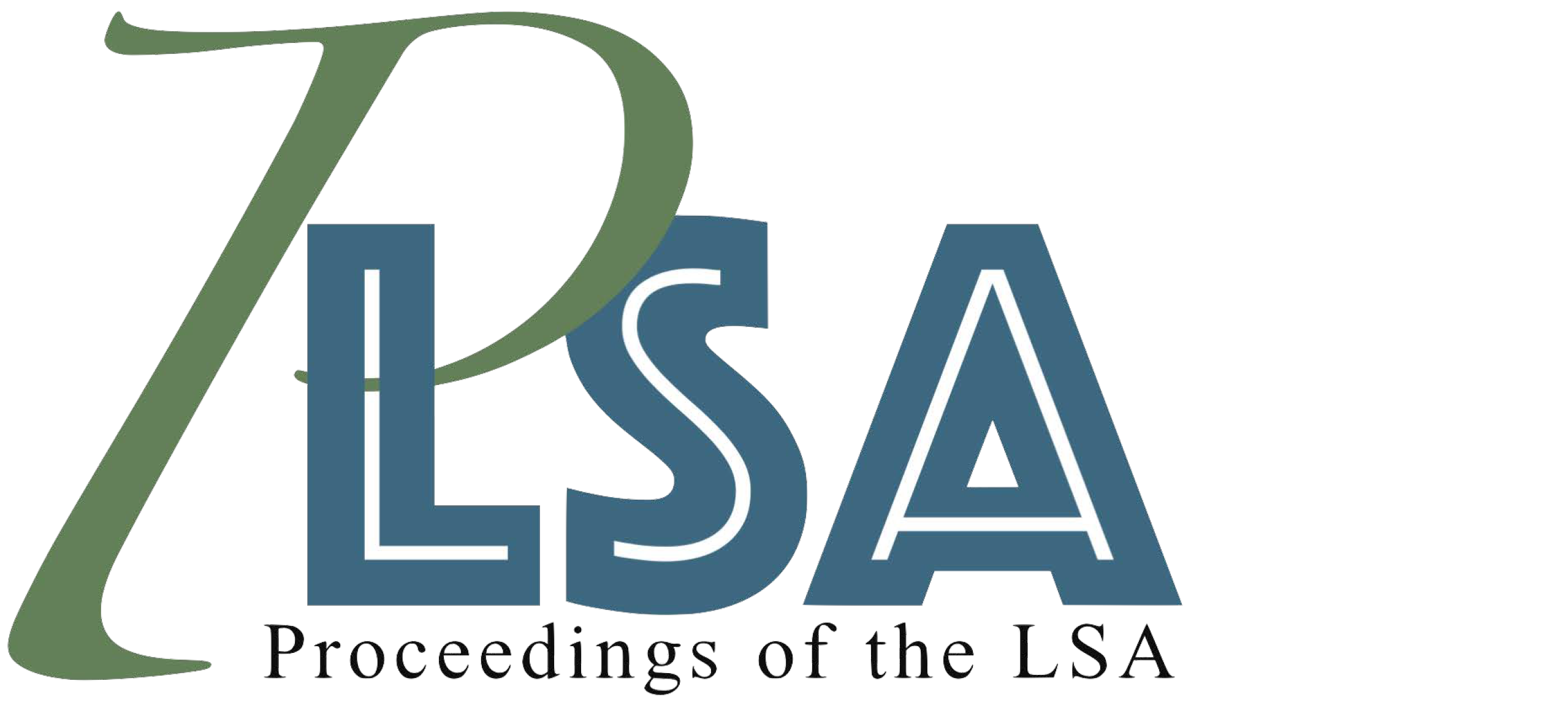A UG-based exploration of children’s use of the
DOI:
https://doi.org/10.3765/plsa.v9i1.5873Keywords:
bare nouns, article-less langauges, acquisition of articles, English definite article, Universal Grammar hypothesisAbstract
English-learning-children have been shown to use “the” in a non-adult-like manner, to refer not only to discourse-old referents but also to discourse-new ones in many contexts. Here, we explore a novel semantic hypothesis for this acquisition observation, whereby the distribution of “the” in children’s speech is a result of their semantic representation for this item being identical to bare nominals in so-called article-less languages. This hypothesis predicts that children must overuse “the” only in those contexts where article-less languages independently license bare nouns, and not elsewhere. Across two experiments, we utilized a free production task where participants filled in missing NPs in children’s stories. The results were found to be overall consistent with our hypothesis, though there are some alternative interpretations to be further explored in future work.
Downloads
Published
Issue
Section
License
Copyright (c) 2024 Kaitlyn Harrigan, Sadhwi Srinivas, Chloe Kim, Josie Summers

This work is licensed under a Creative Commons Attribution 4.0 International License.
Published by the LSA with permission of the author(s) under a CC BY 4.0 license.
